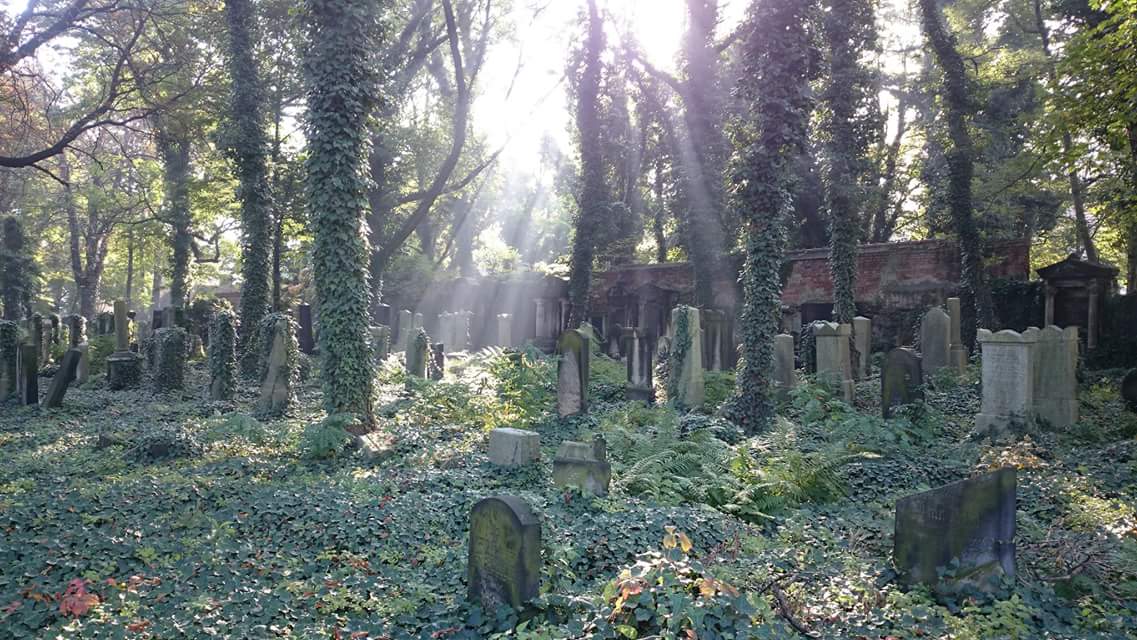
Alternate names: Katowice [Pol], Kattowitz [Ger], Katovice [Cz], Stalinogród [Pol, 1953-56]. 50°16' N, 19°01' E. Between 1953-1956 it was renamed Stalinogród. 1900 Jewish population: 2,264. Katovits: perihatah ve-shekiyatah shel ha-kehila ha-yehudit; sefer zikaron (Tel Aviv, 1996). JOWBR burial list: Kozilska Street Cemetery.
Katowice is a city in Silesia in southern Poland on the Kłodnica and Rawa rivers (tributaries of the Oder and the Vistula). Katowice is located in the Silesian Highlands about 50 km on N of the Silesian Beskids (part of the Carpathian Mountains) and about 100 km on SE of the Sudetes Mountains. A large local center of science, culture, industry, business and transportation, Katowice has been the capital of Silesian Voivodeship since its formation in 1999. Previously, it was the capital of the Katowice Voivodeship, and before then, of the Autonomous Silesian Voivodeship. Katowice area within a greater Silesian metropolitan area is about 5,294,000 people with a city population of 312,201 inhabitants. [May 2009]
CEMETERY:
- The Jewish cemetery in Katowice dates from 1868 when Josef Ludnofski purchased the site west of the road leading from Katowice to Mikołów (Nikolai) from the parish for the Jewish community for 480 talarów. Previously, the dead were buried at the Jewish cemetery in Myslowice, despite the fact that in October 1864, the Jews living in Katowicach, Katowickiej Hałdzie and Brynow) formed their own community. In 1868 construction of the preburial house was completed. On September 9, the cemetery was dedicated. The first burial took place on October 20,1869, a four-year boy named Karl Münzer. The first funeral of an adult, Meyer Katz, was held on February 2, 1870. The yizkor, The Book of Remembrance of Katowice" mentions the Jewish cemetery as maintained exceptionally well under a respected family named Krebs. Daily, workers collected fallen leaves and cares for the flowers planted by the families. Salo Krebs could lead a visiting family to a grave from memory. During the Holocaust every Krebs died, except for daughter Amy, who married Jacob Jarczpiotrkowina from Sosnowiec and now lives in Copenhagen. The rabbis accompanied by the Great Synagogue choir conducted funerals at the cemetery. The cemetery had a large room with a semi-circle of chairs for mourners where the rabbi delivered the eulogy with the coffin in front. A chevrah kaddisha functioned, the most important personalities of the municipality, Mr. Wassertheila, owner of a large textile factory on ul. May 3. In 1870, a thorough refurbishment and expansion took place. During World War II, the Nazis destroyed the 1.1 hectare cemetery with approximately 1,400 graves. Large Jewish tombs belonged to distinguished families of Katowice such as Goldstein, Schalsch, Grünfeld (builder of two synagogues in Katowice) and the tomb of rabbi of Katowice, Jacob Cohn. The exceptional ornamentation tombstones is important. At the central of the twentieth century cemetery is a monument dedicated to Jewish Holocaust victims. The cemetery at ulica Kozielski 16 is open from 8:00 to 17:00, except Saturdays. The area is surrounded by a stone wall. short film about the cemetery. photos. Map [May 2009]
- Burial list [Jan 2015]
- US Commission No. POCE000256: Alternate name: Kattowitz (German); located in Katowickie at 50°14 19°02. The US Commission is not finished rechecking this file [2000].
- REFERENCE: Specyfika kulturowa cmentarzy zydowskich by Jan Pawel Woronczak. 27 p.: ill; call # DS135.P6 W64 1993; Jewish cemeteries. Source: Pennycandy Jansen; This email address is being protected from spambots. You need JavaScript enabled to view it..
- REFERENCE: They Lived Among Us: Polish Judaica, a travel brochure: Arline Sachs, This email address is being protected from spambots. You need JavaScript enabled to view it.
- REFERENCE: Gruber, Ruth Ellen. Jewish Heritage Travel A Guide to East-Central Europe. New York: John Wiley & Sons, Inc., 1992. p. 25, 75l

